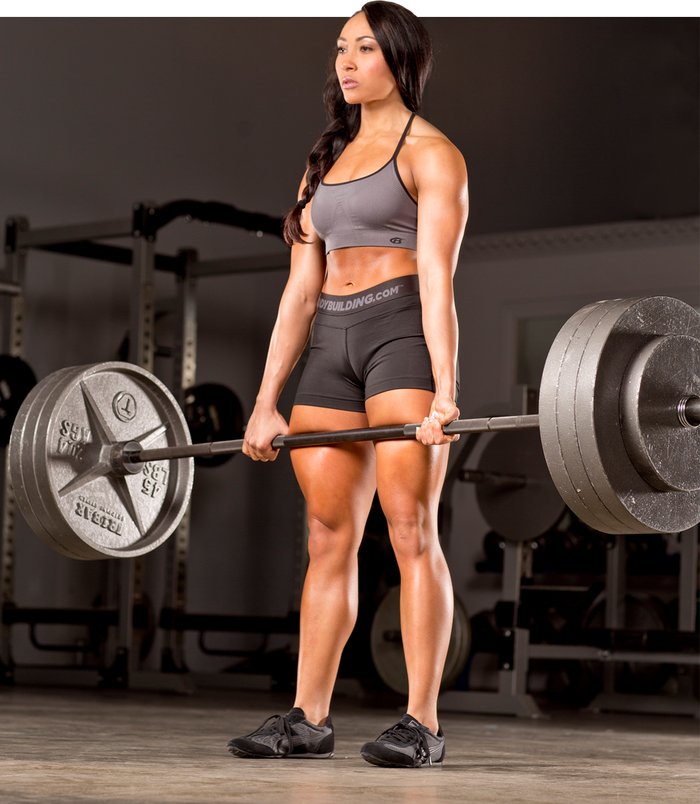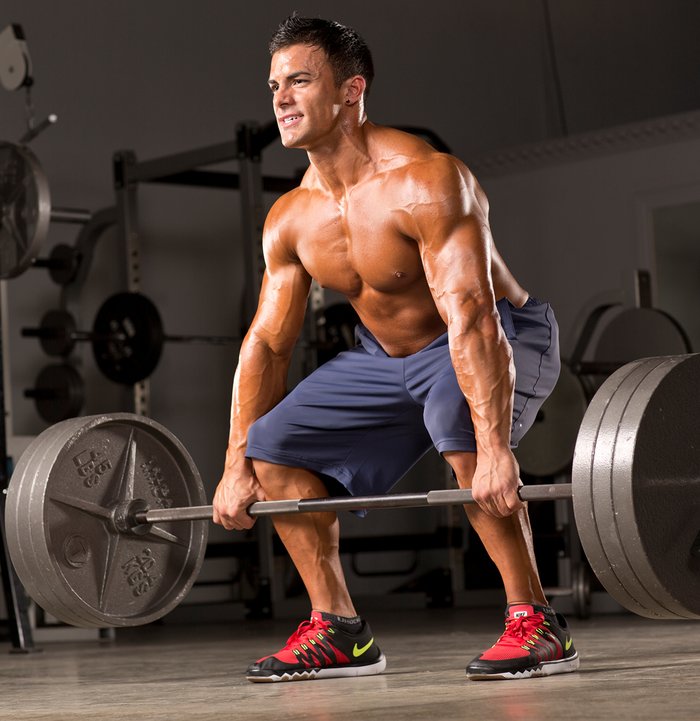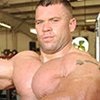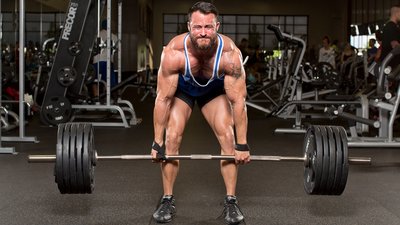I'm not here to champion the deadlift; it hardly needs my seal of approval. The benefits of deadlifts are extensive and beyond debate among those who know training. Deadlifts:
- Strengthen the entire posterior chain (backside of the body)
- Develop amazing core, grip, and functional strength
- Build tons of muscle mass
- Enhance cardiorespiratory fitness and fat loss (with the right amount of volume and intensity)
But where should you put deadlifts in your bodybuilding workout? Should they go with your back or legs? The answer isn't as simple as it is for most exercises. When you do deadlifts depends on sequence and application.
Deadlifts in a Leg-Day Workout
When deadlifting on leg day, exercise order is everything. For best results, place deadlifts later in your workout and focus on more volume and reps. The reason for this strategy is fatigue—both neurologically and physically. By not following this advice, your chance of injury increases and your workout is less effective. Neither is a great outcome.

This set of movements will help you avoid both. Perform these leg-day moves in the order listed (warm-up sets are not included). Choose a weight that lets you approach muscle failure on all movements (except for the deadlifts) by the target rep listed.
For the deadlifts, pick a weight that allows you to reach the target rep range with a couple extra reps left in the tank.
Deadlifts in a Back-Day Workout
While you hold deadlifts for last on leg day, put them first on back day. The considerable central and physical demands that heavy deadlifts put on your back make them the main course for back day. They're the steak in your back-day exercise meal, and everything after is just the potatoes.

For best results, perform deadlifts on back day for lower reps. Assuming your technique is good, repeat the mantra, "Go heavy or go home!" Only on this one exercise will you follow volume and rest schemes used in a typical strength workout and use heavy weight—but never take the movement to muscle failure.
For the rest of the workout, you can go back to bodybuilding-oriented training variables. Perform the moves in the order listed (warm-up sets are not included). As on leg day, choose a weight that lets you approach muscle failure by the target rep listed, but don't take the deadlifts to failure. Leave a rep or two in the tank.
Even though deadlifts are a go-to movement you can include in either your back or leg routine, don't do them on both days. Include them as part of one muscle group workout for a while. Then, change up your training and make them part of your other workout.
And be sure to allow sufficient recovery—especially neural recovery after a really hard back day. Your whole body will thank you and give you the strength and endurance to stick with your program.
A Closing Note for Powerlifters
At the risk of stating the obvious, what I just wrote doesn't apply to you if you're a powerlifter. Generally speaking, powerlifting splits are separated by the lifts trained or the session's objectives. For the sake of competition readiness, many powerlifters like to train squats and deadlifts on the same day, to simulate a meet.
Still others are hell-bent on training the lifts on separate days, to maximize the deadlift session and hit the supporting accessory work. Typically, they follow a Monday/Wednesday/Friday scheme to hit the big three lifts.
There's been no consensus on which approach is better; powerlifters have achieved success both ways.


